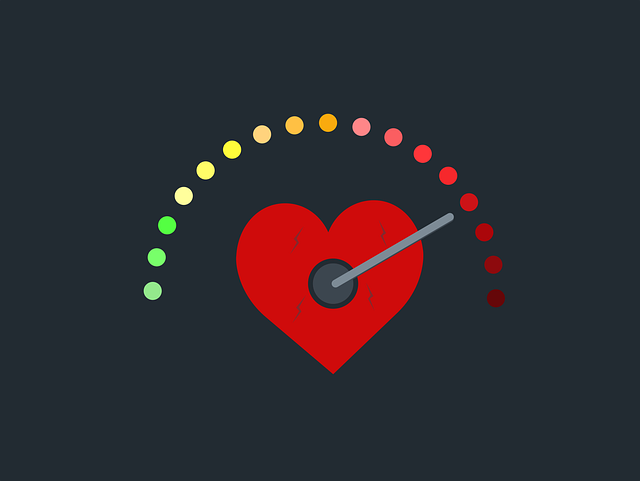In today’s fast-paced, hyper-connected world, maintaining mental well-being is more challenging than ever. Between work demands, social obligations, and the constant influx of digital communication, it’s easy to feel overwhelmed and stretched too thin. One powerful yet often overlooked tool for protecting your mental health is setting boundaries. Boundaries are the limits we establish to define what is acceptable and what is not in our relationships, work, and personal lives. They serve as a shield against burnout, resentment, and emotional exhaustion, fostering healthier connections and a greater sense of self-worth.
1. Understanding Boundaries: What Are They?
Boundaries are essentially guidelines that help us communicate our needs, values, and limits to others. They can be physical, emotional, or time-related, and they play a crucial role in preserving our energy and mental clarity. Without clear boundaries, we risk overextending ourselves, neglecting our own needs, and allowing others to take advantage of our kindness.
- Physical Boundaries : These involve personal space and touch. For example, deciding how much physical proximity you’re comfortable with or whether you’re okay with hugs from acquaintances.
- Emotional Boundaries : These protect your emotional energy by determining how much of yourself you share and how much you allow others’ emotions to affect you. Saying “no” to toxic conversations or avoiding people who drain your positivity are examples of emotional boundaries.
- Time Boundaries : These ensure you allocate enough time for rest, hobbies, and self-care. For instance, setting specific hours for work and sticking to them helps prevent burnout.
2. Why Boundaries Matter for Mental Health
Setting boundaries isn’t just about saying “no”; it’s about creating a life that aligns with your values and priorities. Here’s why boundaries are essential for mental well-being:
a. Reducing Stress and Overwhelm
When you don’t set boundaries, you may find yourself constantly juggling tasks and responsibilities, leaving little room for relaxation or self-care. This chronic stress can lead to anxiety, irritability, and even depression. By clearly defining what you can and cannot handle, you reduce unnecessary pressure and create space for peace of mind.
b. Preventing Resentment
Saying “yes” to everything out of fear of disappointing others often leads to feelings of resentment. Over time, this resentment can damage relationships and erode your self-esteem. Setting boundaries allows you to prioritize your needs without guilt, fostering mutual respect and understanding.
c. Enhancing Self-Worth
Boundaries send a powerful message—to yourself and others—that your time, energy, and emotions are valuable. When you honor your limits, you reinforce the belief that you deserve care and respect. This boosts confidence and empowers you to advocate for yourself in all areas of life.
d. Promoting Healthy Relationships
Healthy relationships thrive on mutual respect and clear communication. Boundaries prevent codependency and ensure that interactions remain balanced and supportive. For example, telling a friend that you need some alone time after a busy week doesn’t mean you don’t value their friendship—it means you’re prioritizing your well-being so you can show up fully when you do connect.
3. Types of Boundaries to Consider
To effectively manage your mental health, it’s important to identify which types of boundaries you need to implement. Here are some common areas where boundaries can make a difference:
Work-Life Balance
Many people struggle with separating work from personal life, especially with the rise of remote work. Setting boundaries around work hours, email notifications, and weekend availability ensures you have time to recharge and focus on non-work activities.
Digital Detox
Constant connectivity via smartphones and social media can blur the lines between personal and professional life. Establishing tech-free zones or designated screen-free times (e.g., during meals or before bed) can improve sleep quality and reduce anxiety.
Social Commitments
It’s okay to decline invitations if you’re feeling overwhelmed or simply need downtime. Learning to politely say “no” without overexplaining protects your energy and prevents social burnout.
Family Dynamics
Family relationships can sometimes be fraught with expectations and unspoken rules. Communicating your boundaries—whether it’s limiting visits, addressing unsolicited advice, or discussing financial matters—can foster healthier dynamics.
Self-Care Prioritization
Boundaries aren’t just about external factors; they also involve how you treat yourself. Scheduling regular breaks, engaging in activities that bring joy, and recognizing when to step back from stressful situations are forms of self-boundary setting.
4. How to Set and Enforce Boundaries
While the concept of boundaries sounds straightforward, putting them into practice can be challenging, especially if you’re used to people-pleasing or fear conflict. Here are actionable steps to help you get started:
a. Reflect on Your Needs
Take time to assess what drains your energy and what replenishes it. Identify areas where you feel disrespected or taken advantage of, and consider what changes would make you feel more at ease.
b. Communicate Clearly
Use “I” statements to express your boundaries assertively but respectfully. For example:
- Instead of saying, “You always call me late at night,” try, “I need quiet time after 9 PM to unwind.”
- Or, “I feel overwhelmed when I’m asked to take on extra projects at work. I’d appreciate it if we could discuss my current workload.”
c. Start Small
If setting boundaries feels intimidating, begin with low-stakes situations. For instance, turn off notifications during dinner or let a colleague know you’ll respond to emails within business hours. Gradually build up to more significant changes.
d. Be Consistent
Consistency is key to enforcing boundaries. If you waver or give in to requests that violate your limits, others may perceive your boundaries as optional. Stick to your decisions firmly but kindly.
e. Practice Saying “No”
Saying “no” doesn’t have to be harsh or confrontational. Phrases like “I’m unable to commit to that right now” or “That doesn’t work for me, but thank you for understanding” convey your position while remaining polite.
f. Seek Support
If you’re struggling to set boundaries, enlist the help of a therapist or coach. They can provide guidance and support as you navigate these changes.
5. Challenges in Setting Boundaries
Despite their benefits, setting boundaries can come with challenges. Some common obstacles include:
- Fear of Rejection : Worrying that others will judge or reject you for asserting your needs.
- Guilt : Feeling bad about potentially disappointing someone.
- Pushback : Others might resist your boundaries initially, especially if they’re accustomed to having unlimited access to your time or resources.
It’s important to remember that true friends, family members, and colleagues will respect your boundaries once they understand their importance. Those who refuse to honor your limits may not be prioritizing your well-being—and that’s a reflection of them, not you.
6. The Long-Term Benefits of Boundary Setting
When practiced consistently, boundary setting yields profound long-term benefits:
- Improved Mental Clarity : With fewer distractions and less overwhelm, you can focus on what truly matters.
- Stronger Relationships : Clear boundaries foster trust, respect, and open communication.
- Increased Productivity : Protecting your time and energy allows you to channel your efforts into meaningful pursuits.
- Greater Life Satisfaction : Living authentically and honoring your needs leads to a deeper sense of fulfillment.








